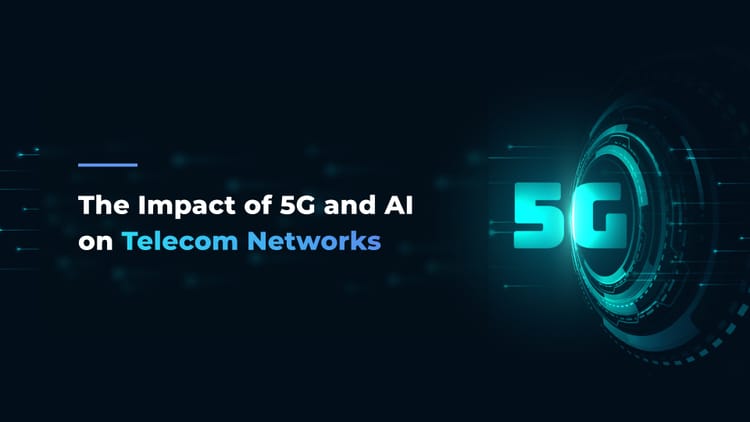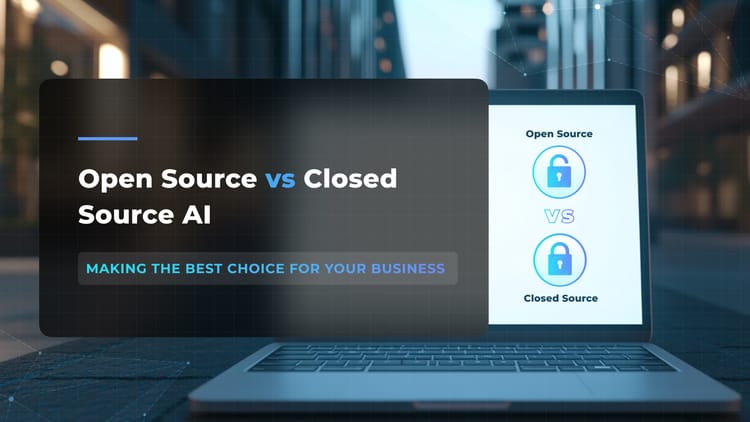Web 3.0: A beginner's guide to decentralized future

With growing security concerns, Web 3 is rapidly gaining popularity due to features such as anti-monopoly and pro-privacy, data ownership, and high security. In this article, we will discuss the stages of Internet evolution, provide an in-depth comparison of each stage, and share industries that will benefit from Web 3.
Evolution of the Internet: Web 1.0 vs. 2.0
The web or World Wide Web (WWW) is a foundation layer of the Internet that provides pages and applications that users can access through a browser. CERN, The European Organization for Nuclear Research, invented the Internet in 1989 and made it public in 1991.
This year saw the birth of Web 1.0, a static (non-changing content) stage of WWW evolution that provided users with all the information they required but never allowed for interaction. This resulted in a "read-only" web experience generation. Page visitors were passive with often no reason to return to the site later.
Although primarily a part of history now, there are Web 1.0 sites still functioning. Craigslist is an excellent example of understanding how the Internet worked. It is outdated but still highly relevant, easy to use, and has mostly stayed the same while the Internet around it has changed.

Web 1.0 consisted of pages connected by hyperlinks formatted in Hypertext Markup Language (HTML), without visuals or forms. The first-generation Internet did its job: it made information available to millions of people and eventually evolved into the Internet we know today.
The next step in the evolution is our current version of the Internet, Web 2.0. It's hard to say precisely when this era began, but it surely only became possible with more and more user interaction. Web 2.0, as we see it today, is a dynamic and blossoming virtual community where fully needed functionality is delivered.
Running advertisements during Web 1.0 was prohibited, which most people these days may find shocking. Today, large corporations such as Google, Meta, and Twitter dominate the Internet; they benefit from knowledge about users through more effective marketing. Web 3 aims to shift power away from large corporations toward individuals.
Web 2.0 vs. Web 3.0 Comparison

What is Web 3.0?
Web 3.0, also referred to as Semantic Web, is a coming third generation of the Internet. Its concept implies fairness, security, and transparency guaranteed to every user.

Here are the leading Web 3.0 features:
- Semantic Web
"Semantic" refers to "meaning". In the context of Web 3.0, it implies that most of the data will be readable by automated agents. It is accomplished by inserting metadata on web pages, allowing machines to perform tasks and access the Internet more intelligently.
Tim Berners-Lee, a British scientist who created the World Wide Web while working at CERN, stated his vision of Web 3.0 in 1999:
I have a dream for the Web [in which computers] become capable of analyzing all the data on the Web – the content, links, and transactions between people and computers. A "Semantic Web", which makes this possible, has yet to emerge, but when it does, the day-to-day mechanisms of trade, bureaucracy and our daily lives will be handled by machines talking to machines. The "intelligent agents" people have touted for ages will finally materialize.
- Artificial Intelligence
Using natural language processing, machines can comprehend information in the same way that humans do, eventually providing user-centric decisions. Machine learning, a branch of AI that uses algorithms and relevant information to mimic human learning, will also be used in Web 3.0, steadily improving its effectiveness through tools such as AI development platforms.
- 3D Graphics
Web 3.0 will include 3D graphics as well as virtual (VR) and augmented reality (AR) technologies. This will transform our two-dimensional Internet today into a three-dimensional cyberworld, resulting in the appearance of real-like places and objects of interest, which will come particularly in handy for e-commerce, real estate businesses, and, of course, the gaming industry.
- Ubiquity
Thanks to IoT, users can access the Internet anytime via any number of devices without needing smartphones or computers. The increasing growth of IoT devices will take it to even more levels in the next generation of the Internet and result in connected and ubiquitous content. Watches, refrigerators, automobiles, even ovens – everything will be connected to the Internet.
- Blockchain
One of the most serious issues with the modern Internet is the lack of user privacy. Tech giants such as Google, Apple, and Meta serve as intermediaries between us and information. In exchange, they receive the most important asset in today's world — an incalculable quantity of personal information used for commercial reasons.
To use convenient services, we sacrifice our privacy and security, and Web 3.0 is about to change that. Blockchain technology, a system known best for enabling digital currency transactions, can protect user data, preventing tech giants from using our info for profits.
There's no "permission" required with Web 3.0, meaning central entities do not affect who gets access to where and do not even require "trust" as there are no intermediates for two or more parties to conduct virtual transactions.
Web 3.0 Across Business
Staying on top of emerging trends is without a doubt advantageous for any business. Web 3.0, on the other hand, has the potential to both streamline and completely revolutionize many processes in some industries. The new era is expected to open up new opportunities for operations, customer interaction, and the creation of new business models.
Currency Exchange
Decentralized exchanges, or DEXs, are P2P platforms that enable traders to exchange their assets without an intermediary, removing any need for banks to manage the whole transaction process.
Web 3.0 currency exchange brings many benefits, like security due to decentralization and users having complete control over their money. With decentralized exchange, it is unrealistic for hackers to gain access to someone's funds. Security and transparency are two factors that will make the technology popular in Web 3.
Browser
We need a decentralized browser to introduce a philosophical concept like Web 3.0. It is common knowledge that two of the most popular web browsers in the world, Mozilla Firefox and Google Chrome, are utilizing users' data for their own business needs. A key feature of Web 3.0 is the encryption of everything, which protects personal information from being leaked.
Examples of Web 3 browsers would be Opera Crypto Browser, Osiris, and Brave. Each one includes its own Web3 wallet, which enables you to purchase, sell, and trade cryptocurrency and NFTs; such browsers also provide peer-to-peer file hosting services.
Social Media
The use of social media is essential to our daily lives. Since the MySpace era to Instagram, Web 2.0 has presented us with a variety of problems to solve.
There are only a few companies that control the market and exploitation of users' information for ad revenue, such as Meta or Alphabet. The consumers, however, have not benefited from this as much.
Data sharing in Web 3 will be rewarded. It will be the community instead of centralized authorities that owns the network, preventing such misuse of personal information as was witnessed in Facebook's Cambridge Analytics Scandal.
Storage of Data
Regular users keep their data in Google Drive or iCloud. On the other hand, companies have very different needs because they require much stronger and more scalable centralized data storage solutions./
This problem can be solved by Web 3.0's decentralized storage system. The concept is that instead of storing data in one place, the data and files are secured first and then distributed over thousands of nodes via a peer-to-peer network.
Messaging Applications
We use messaging platforms like Telegram, WhatsApp, and Slack on a daily basis. However, users still face issues with present messaging platforms, like dependability on centralized institutions, which often expose information to hacking.
Blockchain-powered Web 3.0-based messaging apps, such as Obsidian or e-Chat, solve these problems, providing maximum privacy and security, as well as incapability to use personal data for advertising.
Insurance
The finance and insurance sectors have long been chastised for making a profit from users' information. They have been shifting this image by employing Blockchain's decentralized and transparent characteristics.
It is Web 3.0's mission to streamline the filing of insurance claims and eliminate false claims. It will also bring the world closer to the realization of Open Banking, which has long been considered a bit unrealistic.
Streaming Platforms
As one of today's most thriving industry sectors, Spotify and Netflix are at the top of the entertainment industry.
Many creators are giving constructive criticism toward these businesses, claiming they as creators do not receive their fair share of the profits. Many people claim that advertising is carried out using their data.
Web 3.0 Blockchain implementation benefits to streaming services include decentralization and smart contracts. Creators and services could work freely with zero copyright problems.
Key Takeaways
- Web 1 was a "readable" evolution phase of the Internet, with very little interaction between users and websites due to static web pages and no visuals or forms.
- Web 2 is a "read-write" generation of the Internet that focuses on user-to-website interaction. With community development being its primary goal, Web 2 is receiving criticism for storing users' data for profit.
- Web 3 is the Internet of the future, a transparent and secure network based on Blockchain in which users do not have to worry about losing their personal information.
- Web 3 will impact businesses by making them more user-centric and transparent. All issues that come with storing and utilizing user data will change with the implementation of Web 3.0. Companies will open their doors to Blockchain technology and the functionality it brings.






